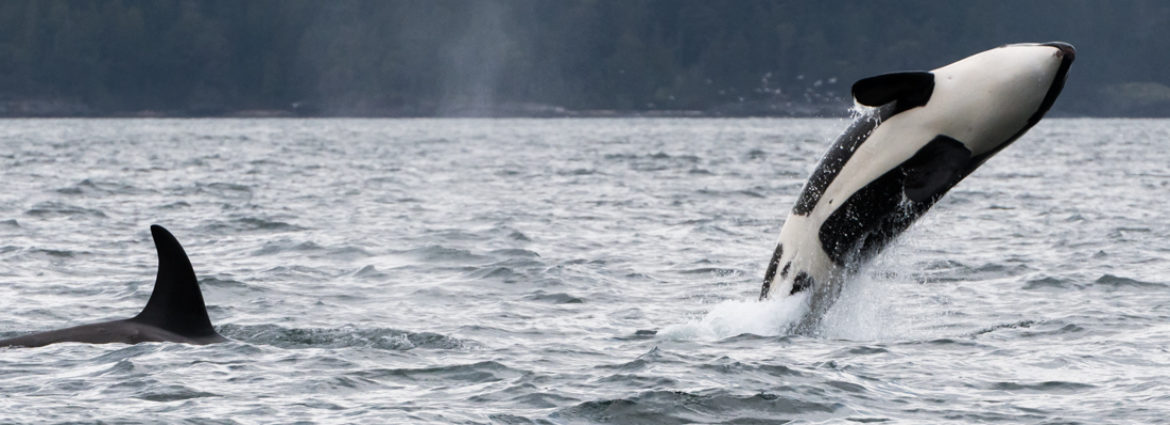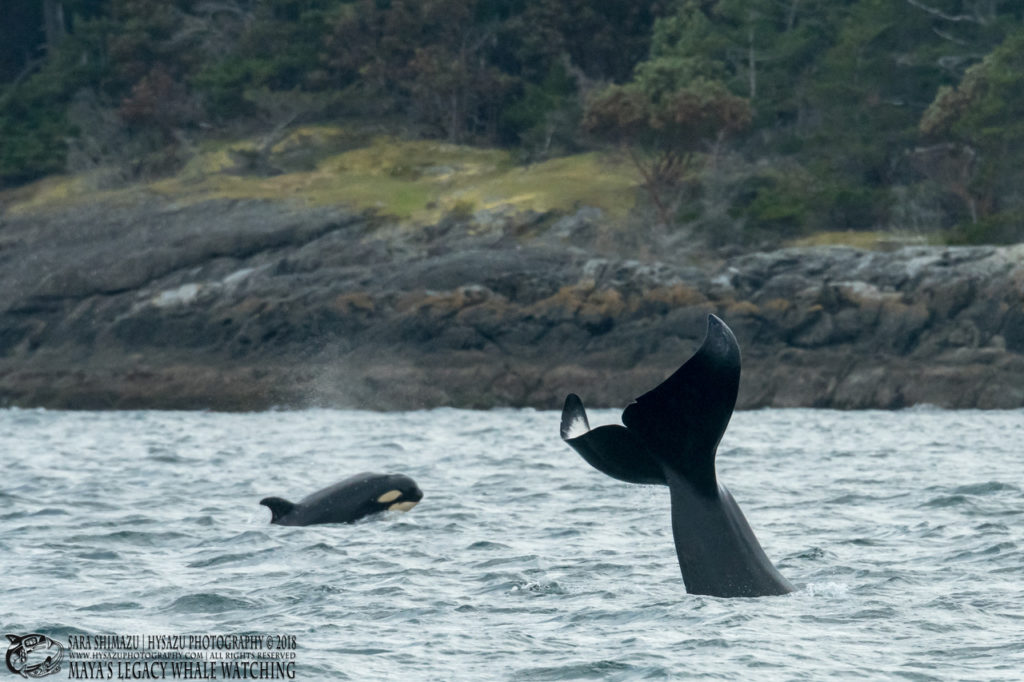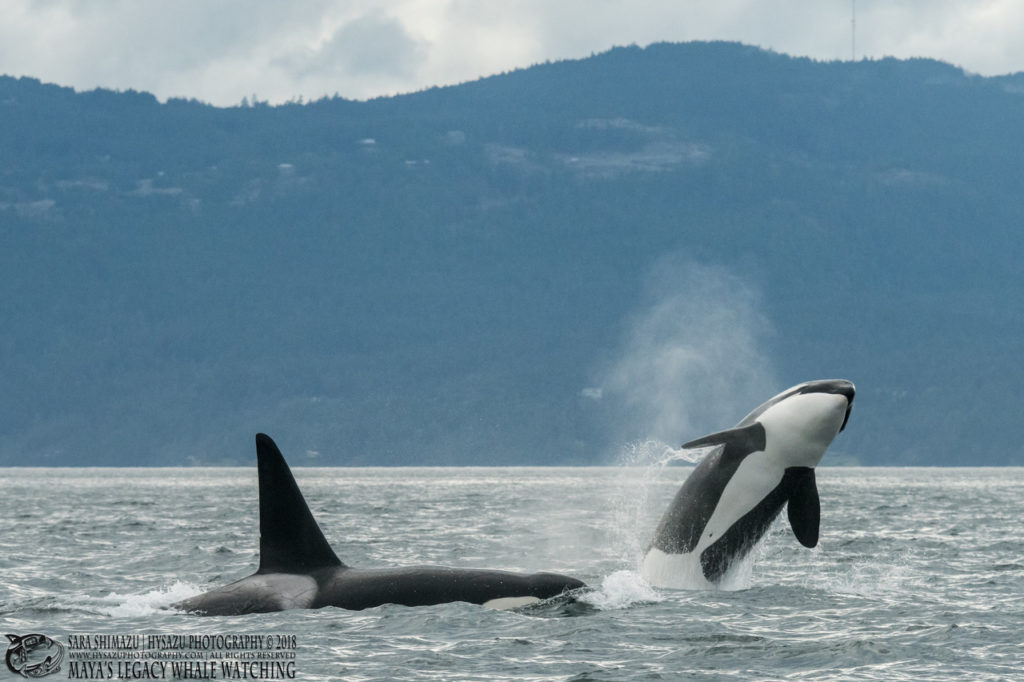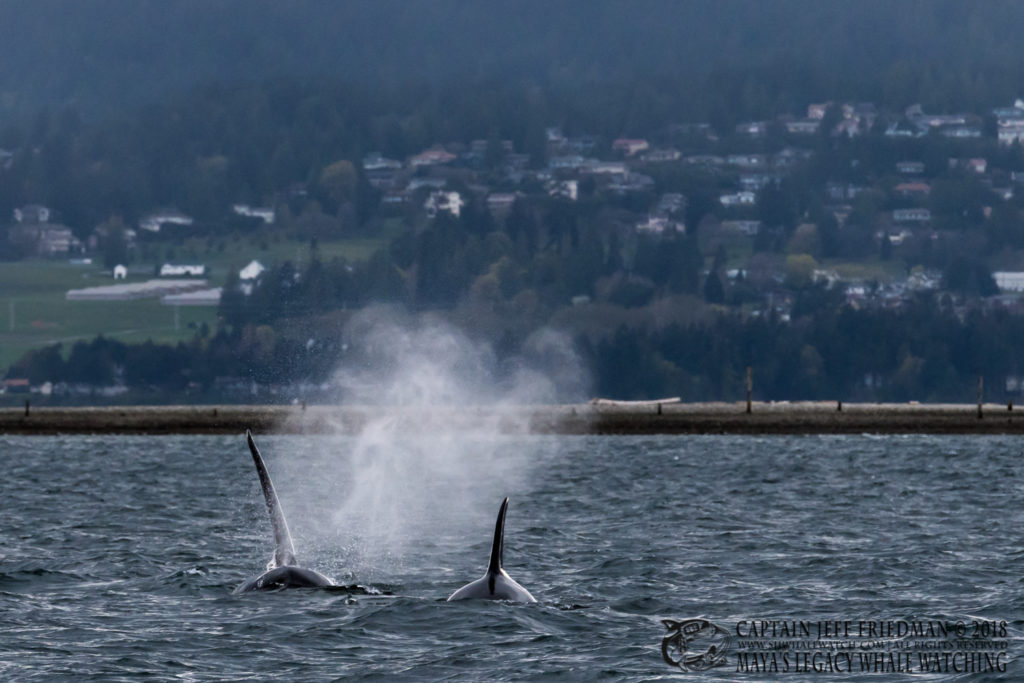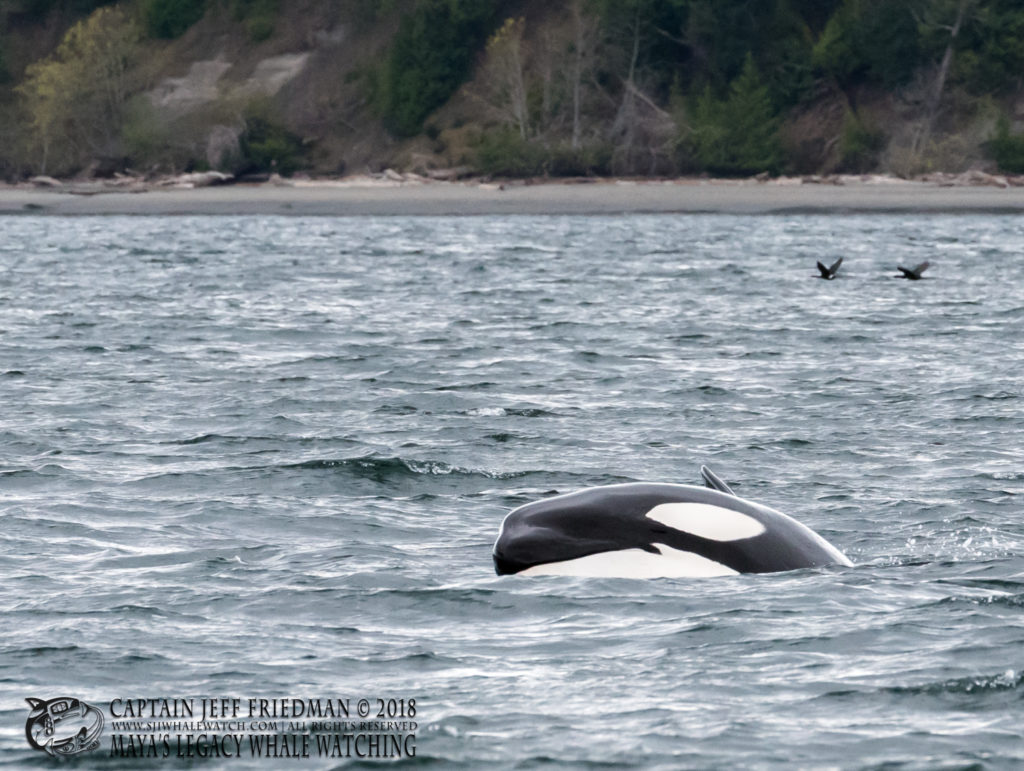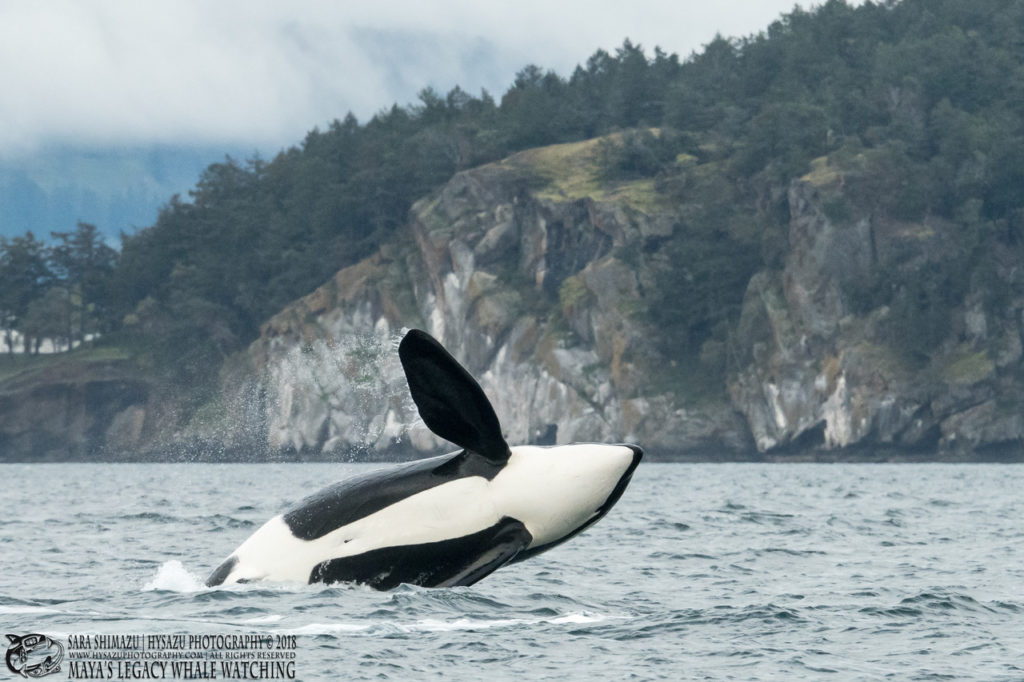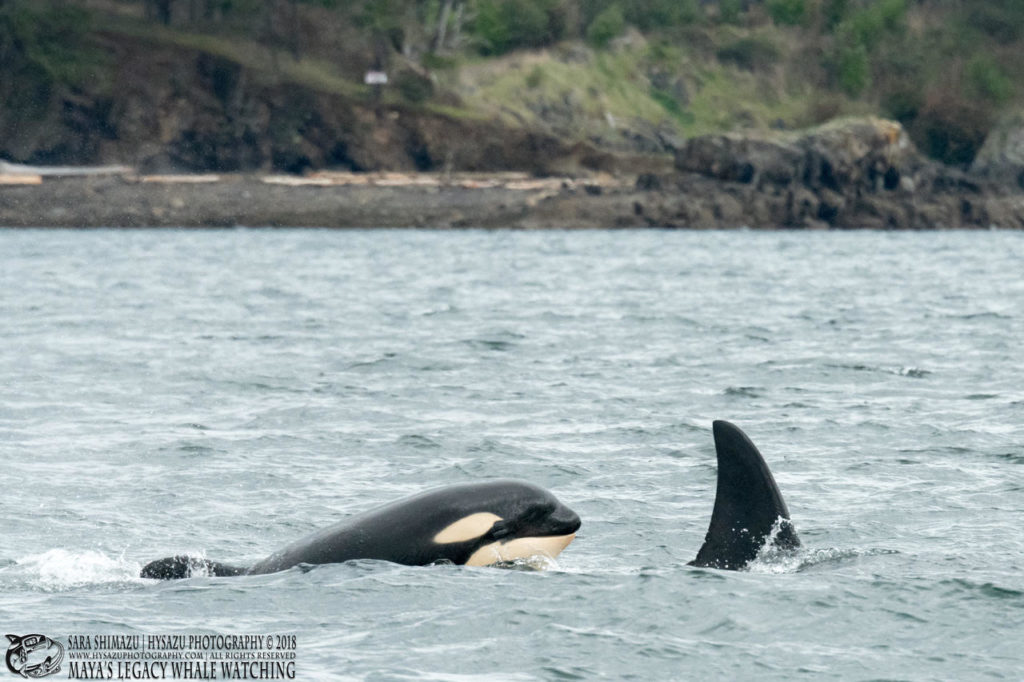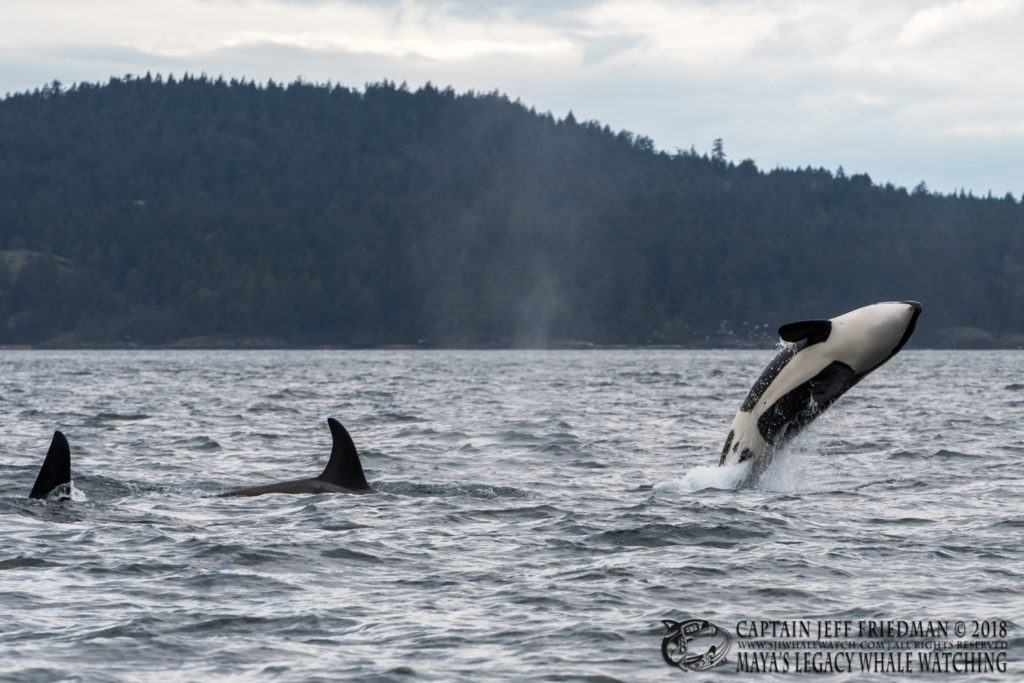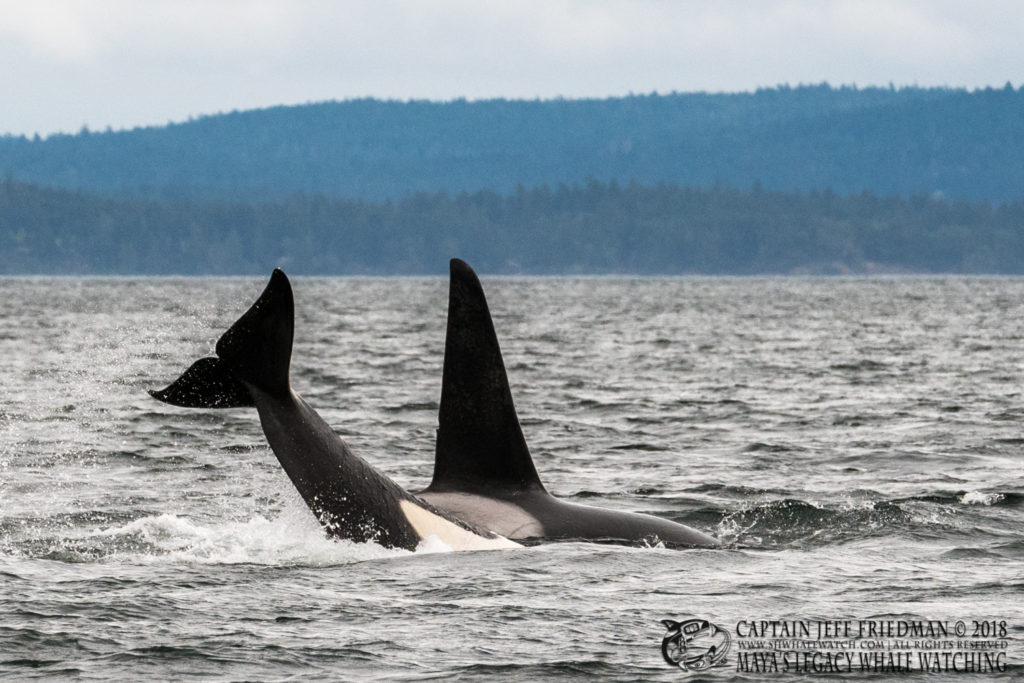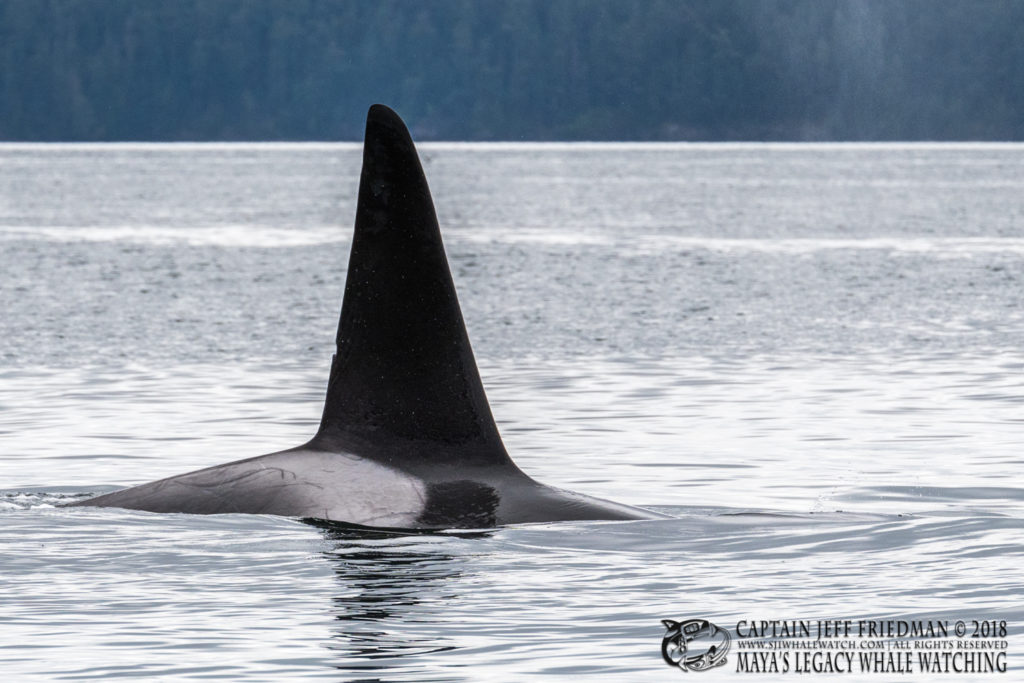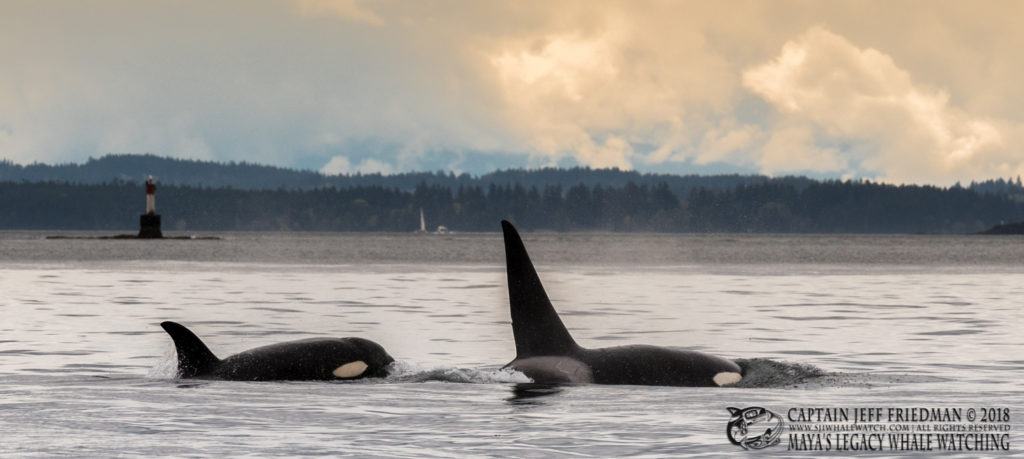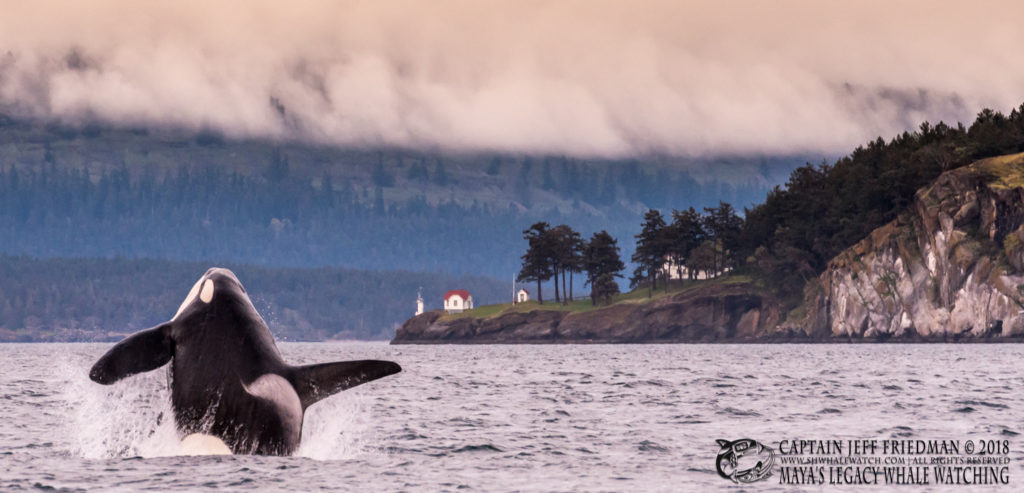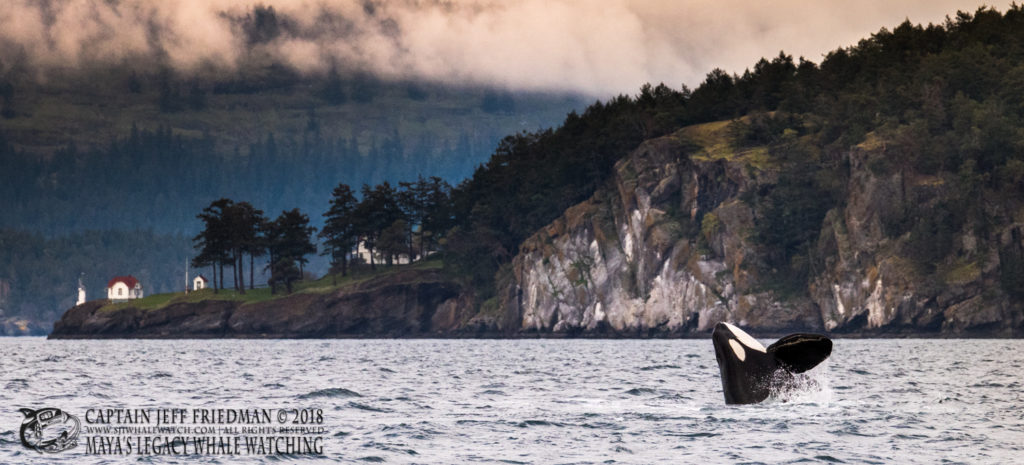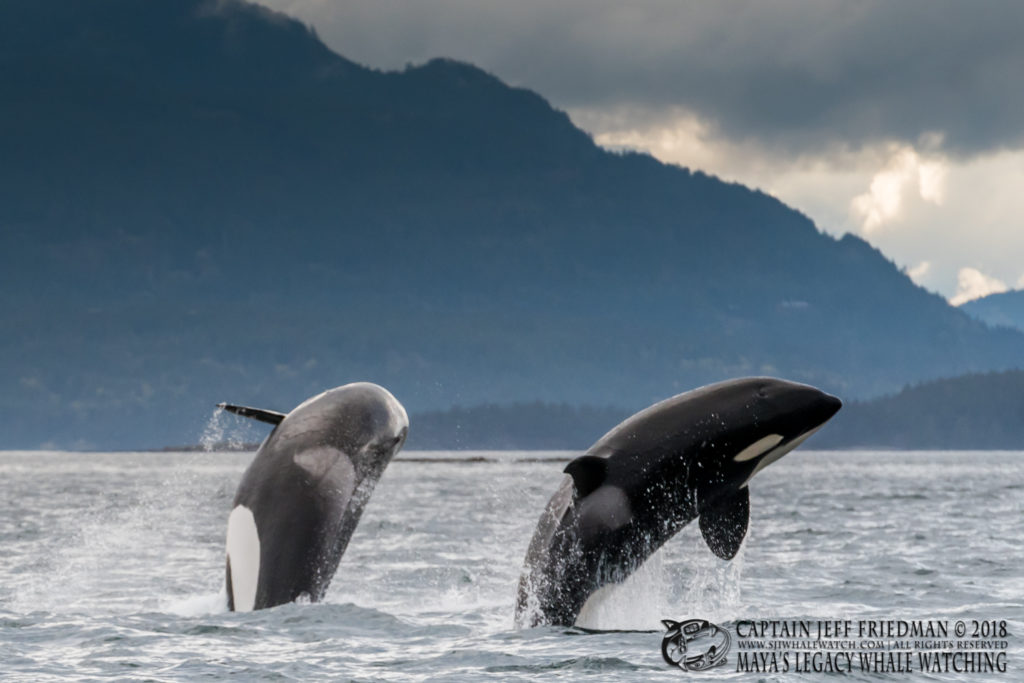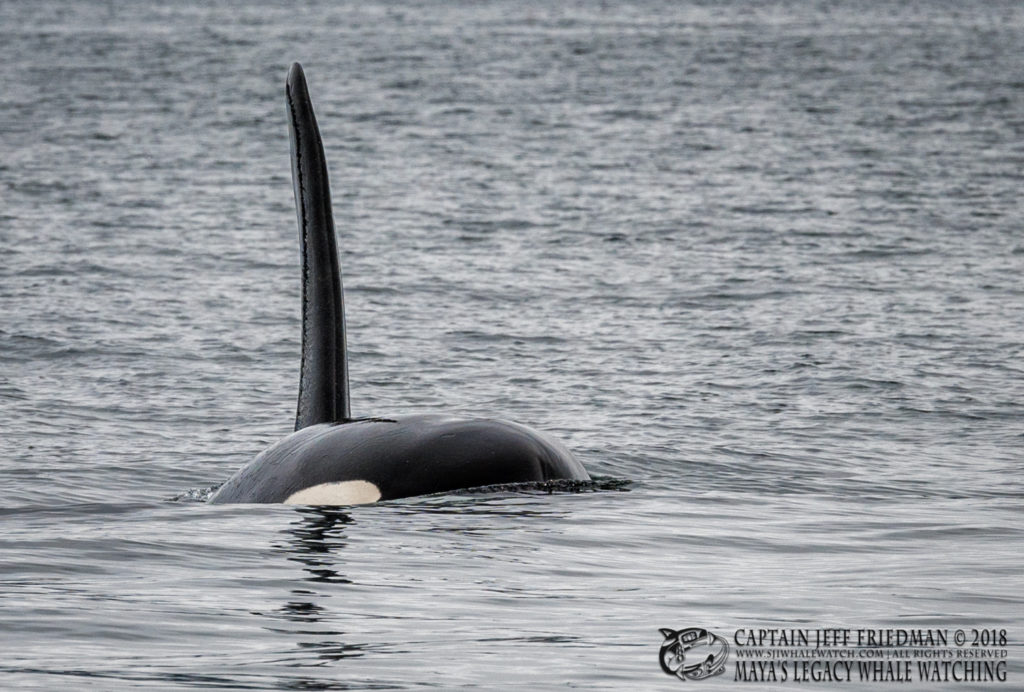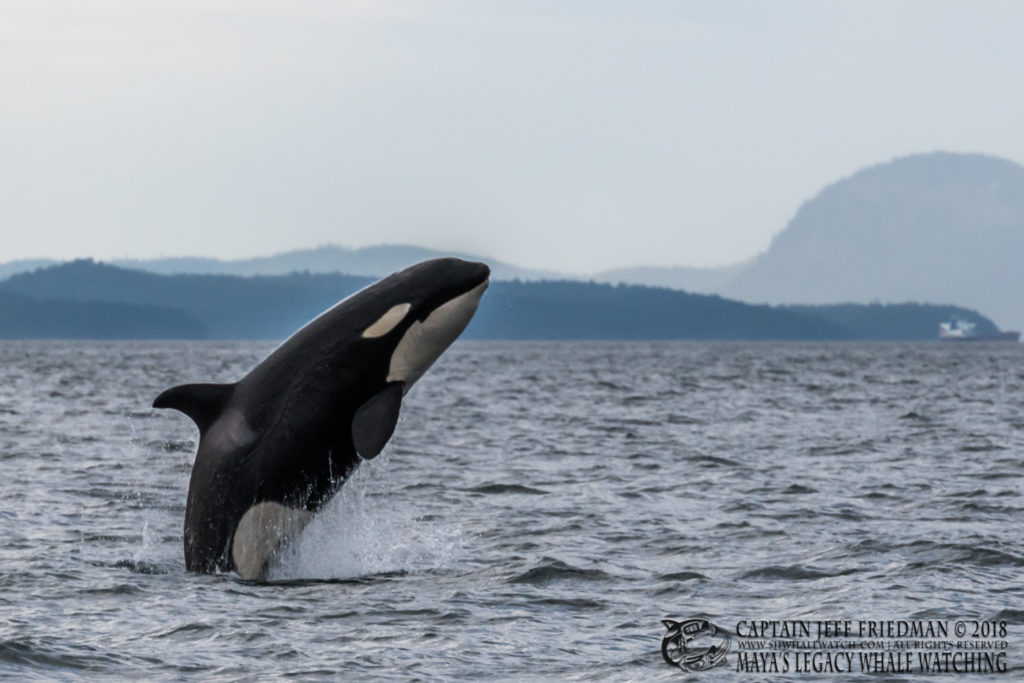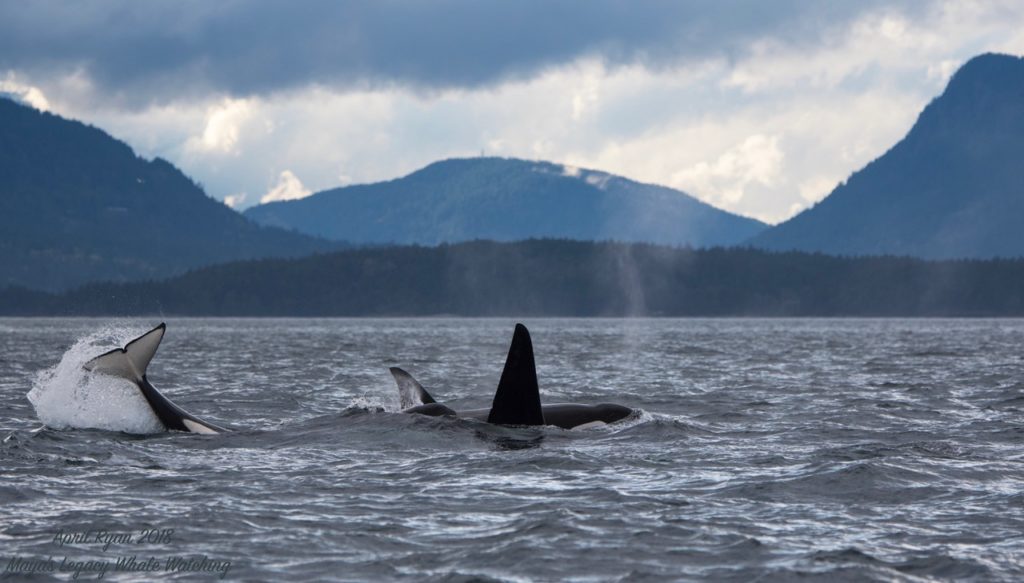In the fall of 2017 one of the families of Bigg’s killer whales frequently seen in the San Juan Islands split up. Although we do not see this behavior with Southern Resident killer whales, it is not uncommon in the culture of Bigg’s orcas for an individual whale to leave their family.
For example, adult females will break off from their mother when she begins to have her own offspring. Sometimes adult male Bigg’s orcas leave their family to travel alone, with other independent males, or other families. And in rare instances, a young whale will break from their family for reasons unknown — at least to us humans. This is quite an interesting cultural difference between the two populations of killer whales that inhabit the Salish Sea.
On our fall whale watching tours we noticed that seventeen-year-old male T49A1 was no longer traveling with his family, the T49A's. Although we were a little surprised, it wasn’t unusual or concerning since we know Bigg’s orcas will sometimes venture off from their family.
T49A1 was seen alone on September 15th and then again a few days later. When he was spotted on September 19th in Admiralty Inlet he had joined up with his twenty-five-year-old aunt, T49B, and her offspring. A month later they were seen again, still together. We were very intrigued to see if he would remain with his aunt and cousins, hook up with a different family or venture off independently.
In November we encountered the T49A’s and T49A had a brand new calf swimming at her side. The infant, dubbed T49A5, was young — no older than a month or so. T49A1 was not with the family. On a few of our winter whale watching tours we again encountered the T49A’s and T49A1 was still absent. Apparently his split from his family continued.
On April 8th, 2018, our whale watching tour had just departed from Friday Harbor. We received a call that killer whales had been spotted north of the San Juan Islands, in Swanson Channel. When we arrived on scene we immediately saw several familiar fins rising together. We were fascinated and elated to see T49A1 was back with his mom and siblings!
T49A1 had been seen with an unrelated male orca just three days before, so the reunion was likely very recent, perhaps just that morning. If we were excited to see T49A1 back with his family it was nothing compared to how his family reacted. Of all of our tours watching Bigg’s killer whales this was the most extended social encounter we have had with a single family. They were socializing all day long!
Seven-year-old T49A3 seemed especially excited to have his older brother back with the family. We watched the two brothers side by side throughout the entire afternoon, rolling and engaging in percussive social behaviors. Our passengers and crew shared the incredible experience of witnessing the family reunion as we watched the two brothers cartwheel, tail slap, roll and breach. Although we try not to anthropomorphize, T49A1’s younger brother certainly seemed happy to have his big brother back.
While we may never know why male Bigg’s orcas disperse from their mothers, permanently or temporarily, it provokes many theories as to why it happens. Maybe T49A1 left because his mother was in the later stages of pregnancy. She would soon have a young, dependent calf at her side. A male of his size requires a lot of food every day—calories that would be especially important for a lactating mother. If so, the benefit he provides as an experienced hunter and babysitter could be outweighed by those re-directed calories. Or perhaps he just wanted to get away for a while and hang out with different whales, see the world. Perhaps he simply had a bit of wanderlust. They’re such intelligent animals it could be any of those reasons, or something completely different. That mystery keeps us human observers coming back for more. It continues to provoke a desire for a deeper understanding. And that never gets old.
We are eager to see the T49As again to learn if T49A1 remains with his family or if this was just a short visit.


